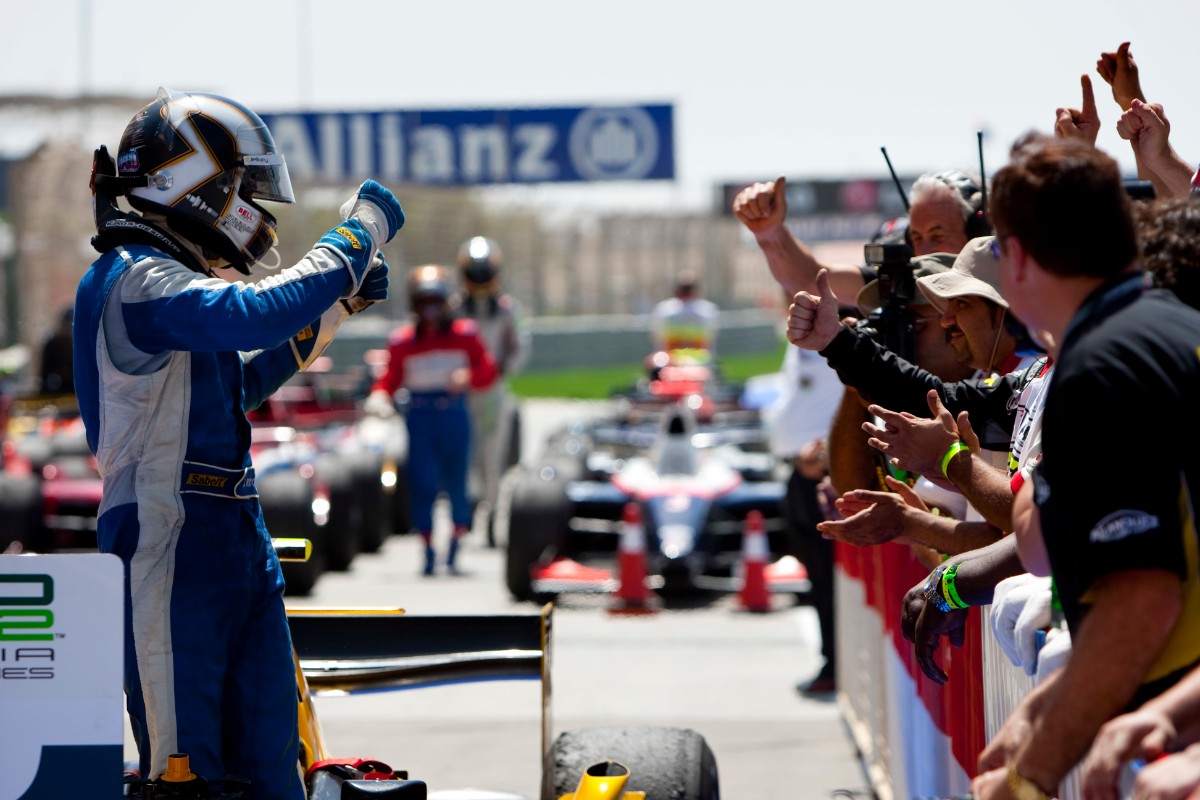
Photos: GP2 Media Service / LAT Images
Giacomo Ricci has been a presence in GP2 since 2008, and he racked up two wins in 46 starts across four years of racing. He’s been behind the pitwall in the seasons since, and added wins in GP3 and FIA F3 too
Just over a decade ago, there was an air of confidence in Italy about its Formula 1 prospects. Ferrari had signed Fernando Alonso, Toro Rosso was on the up as a constructor team, Vitantonio Liuzzi was at an improving Force India and Jarno Trulli had joined returning legendary name of Lotus and was sure to score.
A few of those hopes were debunked in the season opening Bahrain Grand Prix, but there was encouragement in the support paddock as an Italian trio completed their domination of the GP2 Asia season.
Davide Valsecchi won a comfortable title ahead of compatriots Luca Filippi and Giacomo Ricci. It proved a false dawn as none of them made it to F1, but instead became three of the biggest names in GP2 and its successor F2 over the next decade.
Valsecchi won the main series title in 2012 and went on to become the series’ television commentator, Filippi was 2011 runner-up and then became its development driver through Pirelli (tasked most recently with the new 18-inch wheels), while Ricci won one race before also working with the Pirelli and being hired as Trident’s team manager.
Ricci started karting in Italy in the 1990s, and his name first cropped up when he was beaten by Lewis Hamilton to the historic Torneo Industrie title in 1999. Ricci, now 35, remembers being ‘inconsistent’ in karts.
In 2001 he turned 16 and immediately moved to single-seaters, having an underwhelming year in Formula BMW ADAC until a late-season change to a frontrunning team propelled him to podiums and then wins.
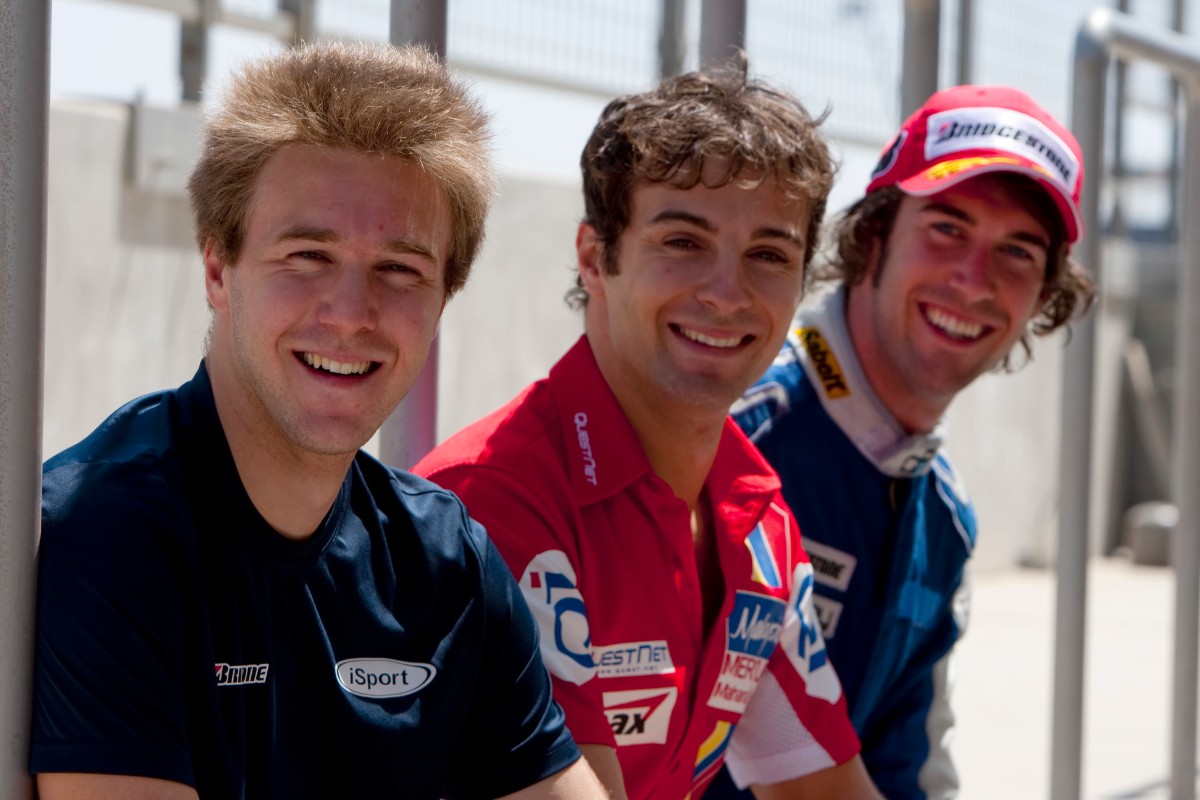
There was no follow-up season, as Ricci’s 2002 budget only covered the first three rounds before he switched his efforts to disappointing part-time Formula Renault 2.0 Eurocup and Germany campaigns without testing. The next year was even further under the radar, as he stepped down to FR1.6 Spain. Surprisingly, this ultimately saved his career.
“Because I was winning in FR1.6 Spain, I also did some races in the French series,” Ricci recalls to Formula Scout.
“The person behind it was Andre Herck. He was the boss of the [Becker] team his son Michael was racing for. I was hired by him in order to set up the car and in order to help Michael perform. It was a great opportunity because I got a free drive.”
This money-saving opportunity enabled Ricci to then race part-time in FR3.5 (while it was still backed by Nissan) in 2004 without testing and start a long association with Auto GP.
“My only chance was to arrive on track and drive and show my best, and that was what I was trying to do. I joined Vergani Racing and I felt immediately comfortable within the team and the [FR3.5] car, and I was able to do quite a good job.”
Ricci entered four rounds and took a best finish of seventh, with identical form in his four Auto GP races with Power Tech. At season’s end, Ricci almost quit racing before a sponsor arrived that funded him in Auto GP for the next two seasons. With International Formula 3000 being replaced by GP2 for 2005, the 470bhp Lola B02/50 was inherited by the Italy-based series and Ricci joined Astromega.
Four podiums in eight races put him third in the points, and enabled him to then move to Giancarlo Fisichella-branded top team Scuderia Coloni for the pan-European 2006 season.
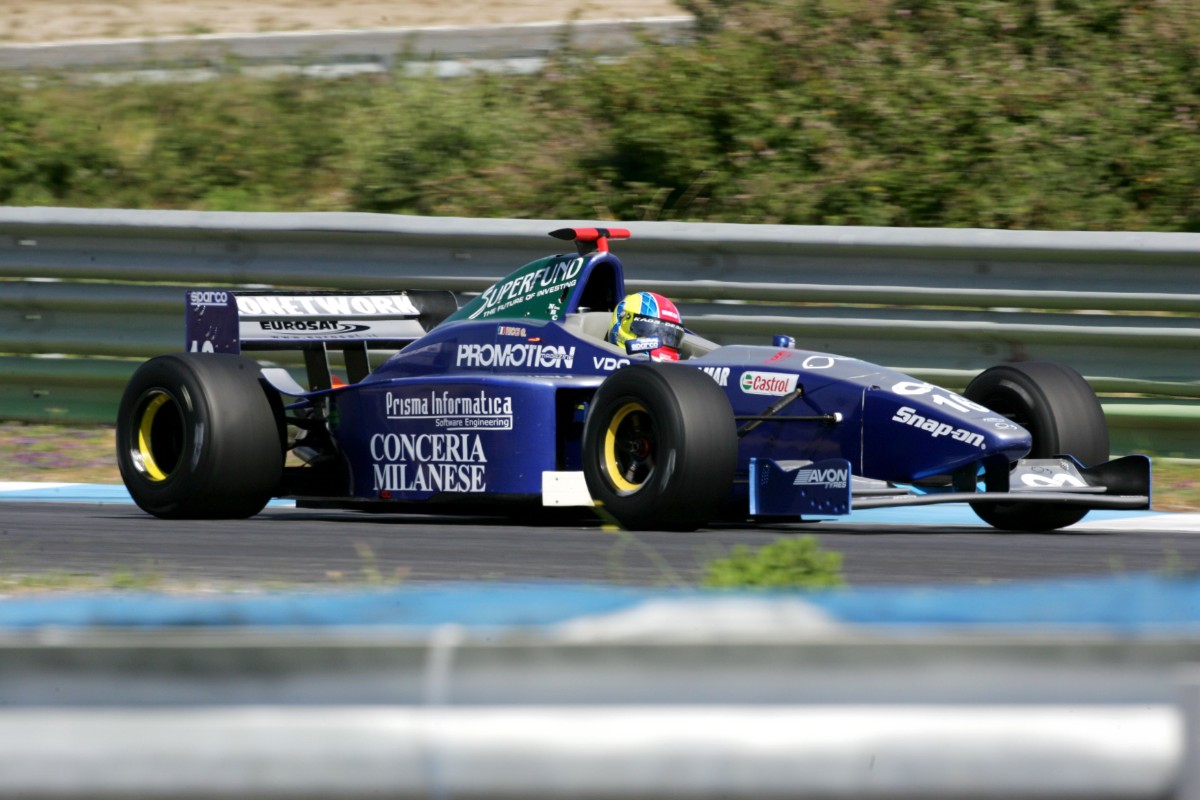
“2006 was a fantastic season. I have many nice memories. Of course first of all being with a top team, that helped me massively because they had a very good understanding about the car. Plus I had a very strong team-mate in Marco Bonanonomi, we?re still very good friends today. It was a great fight between me and him.
“He was faster in qualifying, but then during the races – especially with the reversed grid – I was able most of the time to recover positions. And I?ve always been really strong in the races, especially in the wet. This meant I won the title in the last round at Misano, where I remember it was super tricky because we started with the slick tyres and it was a damp track.
“I?d been very aggressive with the set-up and the tyre pressure, which allowed me to make a massive advantage at the start of the race. But then the track dried up and in the last seven laps I was panicking because I was losing six tenths per lap. The car was going everywhere, but I was able to manage it and win that race.”
In the years after, Ricci’s services were called upon again and again in Auto GP due to his experience. Two wins in six races he was paid to do by ELK Motorsport in 2007 puts him fifth in the points, and he also cameoed in 2010, ’12 and ’13.
“The car was extremely heavy to drive [sans power steering]. It?s not like today where we have paddle shift, we had a sequential lever to use on the bottom of the monocoque. It was very tricky to drive.
“After I won the 2006 title the budget to step up to GP2 was crazy high, and even F1 opportunities were limited. So I gambled on moving to the USA in Atlantics. With the help of Max Papis, I did a shootout with Team Forsythe, one of the best teams.
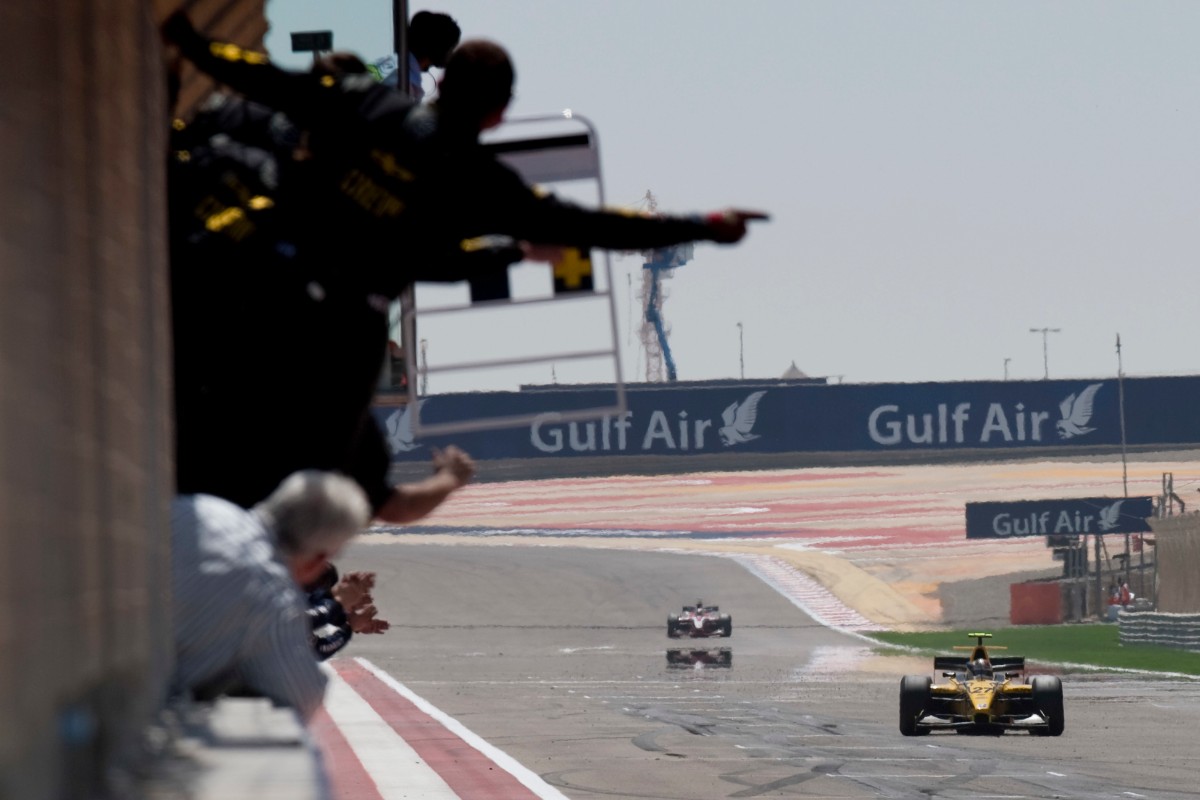
“There was eight drivers for four seats. I did a good job so got the fourth seat for 2007. But at the last moment the team became Red Bull, and they kept only the two Red Bull juniors. The team had sent me a draft contract, and I was very excited to drive for Forsythe but unfortunately there was no place. [Afterwards] we chose to go to Conquest Racing.
“I was very disappointed I lost the opportunity to compete in one of the best teams. I took an opportunity that for me was not the greatest [instead]. I was able to finish the championship in sixth and third in the rookie standings so it was still a positive season, but I didn?t score any podiums. On a couple of occasions I was on the podium but then for a mechanical failure I was not able to reach this kind of result. The best I got was two fourth places.
“America was a great experience for me. Generally speaking, the level of driver there was very high. They were used to the street circuits and the airport circuits, whereas a driver coming over from Europe is not – so it was not easy.
“I remember the emotion, the experience, the drivers parade before every race which was fantastic. The contact you have with the fans, sponsors, with everyone was great. There was still Champ Car and the Indy Racing League at the time. At the end of the year Champ Car went bankrupt, and my goal was to move there. I had already signed [a deal], but unfortunately due to this problem the only chance was to start from zero again in Indy Lights and then try to move to IndyCar. The budget was not there any more for me, so that was my last chance in single-seaters basically with budget.
“In 2008 I returned to Europe and raced almost everywhere. I did some sportscar races, and then I was also driving in single-seaters in [Italian Formula 3, International Formula Master and] Auto GP with ELK. It was not the greatest way to spend a year, but for me it was important to keep racing in order to keep myself at a good level. And I was able to – even in the sportscars – show my potential and ability.”

Ricci’s first encounter with GP2 came at the start of the year with David Price Racing, a title-winning outfit in British F3 but a struggler in GP2, the team principal of which was the same Andre Herck who had helped him half a decade prior.
“Thanks to this relationship that started in 2002, Mr Herck again gave me this chance to do some races, two in 2008, then the [2008-09] Asia series, and then some 2009 races in the main series. At the time the team wasn?t great. We were struggling to go forward with the car, and it was difficult to understand the situation because there was already a bit of a fight inside the team. Even for me it was tough, and most of the time were at the back of the field.”
In both years, Ricci’s services were halted once Michael Herck was up to speed and DPR had found a paying driver. For the GP2 Asia season opener at Shanghai he actually drove for Trident, and he seemingly remained long in the team’s memory.
“At the end of 2009, DPR moved from England to Italy. It kept its name but the organisation was completely different. The car then became a rocket. It started being extremely competitive, and this enabled me to finish third in GP2 Asia. Unbelievable considering I did not compete in the first races because of mechanical issues. In total I did nine laps over the weekend. But in all the other races I was always able to finish top five in race one, and on the podium in race two. I have great memories because all of the top drivers were there: Sergio Perez, Sam Bird, Jules Bianchi, Valsecchi and so on. For me, with such a small team, it was unbelievable to reach that kind of result.?
“Then I was hired by the team at the last moment for 2010, and every race I didn?t know if I was competing in the next one, as nothing was related to my performance. The goal for me was to provide the best result, and at the same time respect team orders and the agreement I had with the team boss.
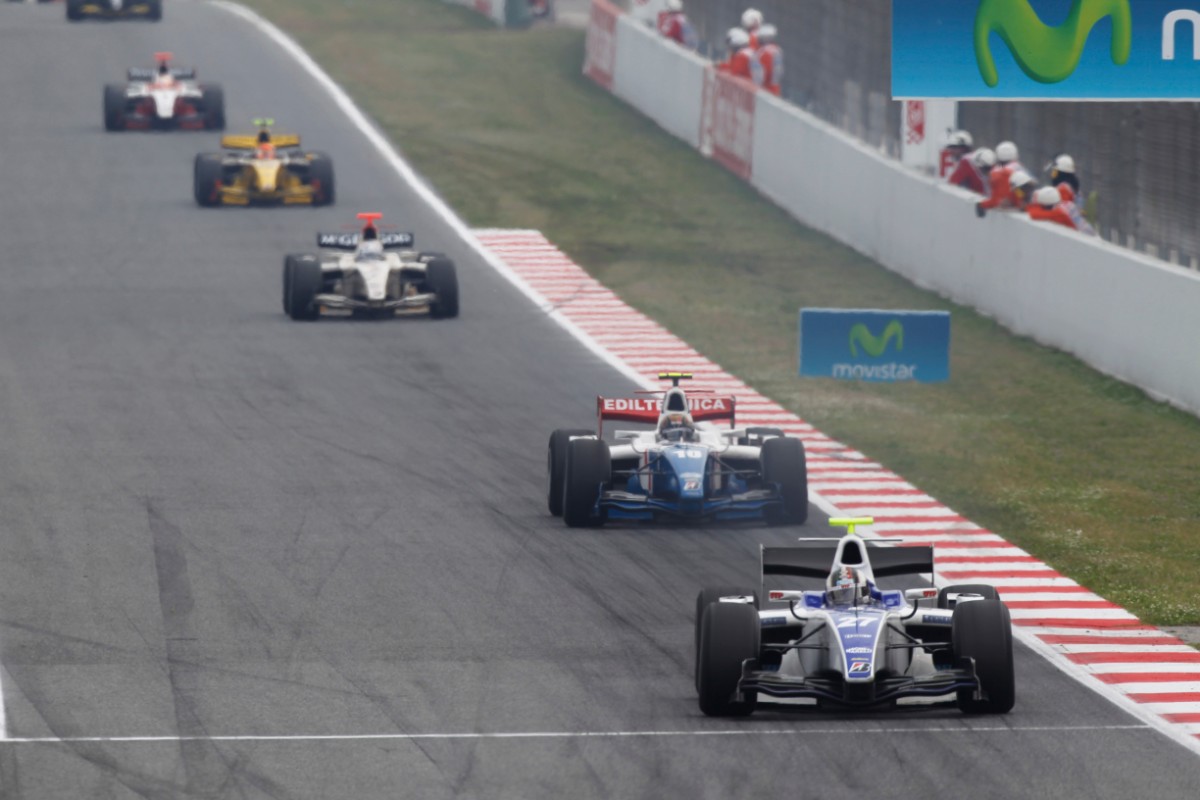
“I was also the test driver of the team, that?s why results were up and down, because I was testing different things in order to discover some positive things about the set-up. As you can imagine, most of the time when you try something it doesn?t work.”
The results really were up and down, as Ricci’s 14-race stint was bookended by a second place and win.
“I started 2010 very well, again I didn?t have the chance to do any private testing. But at the same time I’m grateful forever to Mr Herck because he was the only one who gave me a chance to prove myself. I have nothing to regret and I’m very happy about what I achieved in those two seasons, because when I had the opportunity I used it in the best way possible.”
Ricci was 12th on the grid for the Barcelona season opener, and a crash at the start enabled him to leap up the order.
“I saw everybody get a little bit confused, so I took the opportunity. I was in third after the first corner, and I thought: this is my one opportunity, it?s now or never. I did all the race behind Charles Pic, and I was able to get close to him in the last sector, but never really had the chance to overtake him so I finished second.”
At the Hungaroring he finished eighth in race one, his next points finish, and from reversed grid pole in race two he took DPR’s first main series win since 2005. That result made his car attractive to paying drivers, and his drive ended there.
By this point Ricci had been working as a development driver, driver coach or instructor for eight years, and any cost of racing beyond the running of the car itself at DPR had been covered by these jobs. These financial skills were put to further use when he joined MLR71 in Auto GP at the end of 2012 as a test driver and coach to team owner/team-mate Michele la Rosa.

Ricci wanted to revive his single-seater career, but by the time of the 2013 season opener he was already organising and hiring mechanics and he only raced for two rounds before becoming manager and searching for a driver to replace himself.
After a season of that, continuing work as a coach and with Pirelli in its two-seater F1 car, and a Nurburgring 24 Hours win as a factory Peugeot driver, Ricci received a surprise call from Trident founder Maurizio Salvadori in early 2014.
“It was a very very last-minute call. I remembered that when I signed the contract, the day after they sent me to Abu Dhabi [pre-season testing] to manage the GP2 team, with not so much experience.”
Ricci was now managing former on-track rival Johnny Cecotto Jr, and his experience was also useful for the struggling team.
“The GP3 team was absolutely not performing, and the GP2 team had better potential in comparison. So if you look at 2014 with Cecotto in GP2, and also with Sergio Canamasas, we were able to get some very good results immediately. Johnny had been fighting most of the season to finish top three in the points and ended up fifth.
“One of the best results as a team manager was the first race that I won, with Cecotto at Barcelona. We gambled a little bit with the strategy and we did a mega job with a great pitstop. It was a great drive for him, he started 16th and finished P1.
“I was lucky in that position, having the opportunity to work with Cecotto who was a super experienced driver. It was making my job easier because he knew exactly how to drive the car. After that we made some changes in the team, especially in GP3, and the year after with Luca Ghiotto we almost won the title. From that moment, we are the Trident of today. We are considered one of the best teams in the FIA F3 Championship.”

The biggest change in Ricci’s mind was his driver recruitment strategy, which he describes as a compromise between what a driver brings in performance versus what they bring in budget that then allows the team to improve the package it provides.
“Sometimes it?s difficult to find the best compromise, because sometimes for a team you have to lead on the budget,” concedes Ricci, whose F2 hires have yet to win races.
The first example of his preferred strategy was Ghiotto, who Ricci “pushed like crazy” to sign for the GP3 in 2015 and then GP2 in 2016. The Italian took pole on his GP3 debut at Spa-Francorchamps in 2014, but a team strategy error undid his race.
An engineer with previous working experience with Ghiotto was hired to convince him to join for 2015, and the team went from last in the standings with one points finish to six wins and second in both classifications. From then on, Trident was the only team other than ART Grand Prix able to fill all four of its GP3 cars.
“One of the best satisfactions in GP3 was when David Beckmann swapped from Jenzer Motorsport to Trident in 2018 [and won three races]. From that moment on we?ve been able to prove that our car package was as strong as ART too.”
Ricci also worked with the Ferrari Driver Academy to sign Raffaele Marciello to its GP2 team for ’15, and Trident’s relationship with the F1 manufacturer continued all the way through to last year.
Tyre degradation issues hampered Marciello’s year with the team, and he was dropped by Ferrari at the end of it. Ghiotto took the team’s next, and most recent, GP2/F2 win in 2016.

After its rebrand, F2 introduced a new car in 2018, which Ricci considers a “huge technological jump” from its predecessor. Its increased weight made the issue of tyre degradation even greater, and there’s even more to learn in 2020 with the larger 18-inch wheels being brought in. It’s a challenge for Ricci, but is increasing his love of the series as it gets “more interesting” and the standard of competition gets “higher and higher” as F2 adds complexities and drivers come ever more prepared with “personal trainers, mental coaches, driver coaches, their own karting sessions and sim sessions with the team”. Ricci says it bares no relation to the GP2 of just a decade ago.
He also says this is necessary, given one of his hardest tasks is educating drivers – especially stand-ins – about the Pirelli tyres’ unique characteristics that allow for one push lap and can drop off a cliff many laps before a scheduled pitstop when a driver pushes too hard early on. “The driver needs to adapt their driving style in each moment of the race,” he summarises.
The other big headache Ricci has had as team manager was in 2018, when a fall-out between his F2 drivers Santino Ferrucci and Arjun Maini resulted in Ferrucci deliberately colliding into his team-mate and having a public spact, then receiving a two-round ban, being dropped by Trident and getting taken to court by the team for ?502,000.
“It was a very difficult situation to manage inside the team. Two different drivers with two completely different characters were the result and the whinging about what happened at Silverstone was brought on by himself. When Santino Ferrucci left and Alessio Lorandi replaced him, the ambience changed completely in the team and it was more relaxed. There was more collaboration between both team-mates – as it should be.”